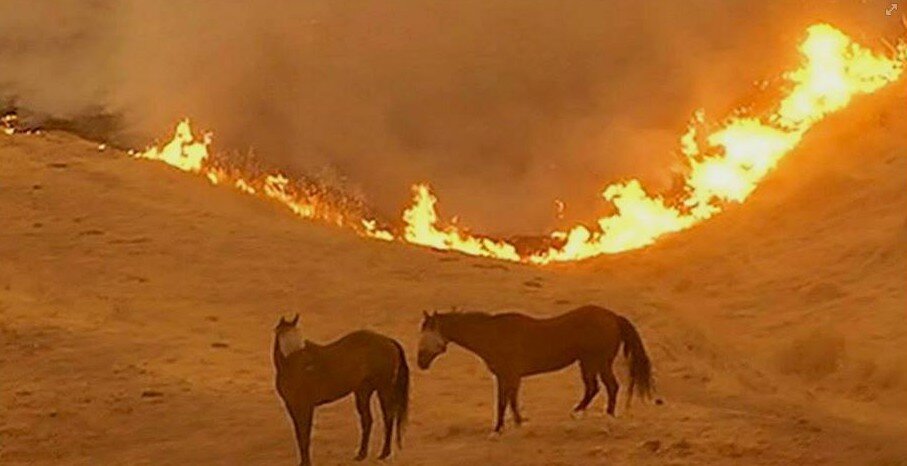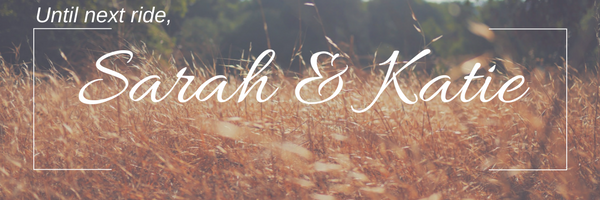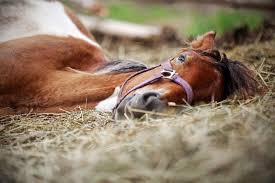EMERGENCY! Be Prepared In Fire
Preparation is key.
With the current events across Eastern Australia, it is no wonder that many of us are on edge.
The fires that are raging are devastating wildlife, property, pet and animal lives. And when the one’s we love are under threat, especially with something so hell-on-earth like bushfire, it puts us into high stress mode - which unfortunately, is not always condusive to straight thinking.
Fortunately, horses are quite clever at getting out of the way of fire, as long as we give them the right chance.
It’s on that note, we have compiled a list to help you prepare in case a fire emergency strikes.
1. Know their safe place
That way, when your property is placed at risk, or if there is a chance it may occur, you can move your horses to a designated area.
Horses can usually escape or avoid fire if they are given enough space, and if we make that space an area less likely to burn, that makes it even easier! So select a large “Jenny Craig” paddock (eaten out of vegetation, or more dirt than grass). Alternatively, a number small eaten out paddocks interlinked with opened gates, or a large sand arena devoid of close vegetation or buildings, may also be suitable.
Even better if that area has a dam that the horses can stand in to escape the flames and heat.
DO NOT put them in small, inescapable areas such as pens or stables - they will more likely panic, thrash and become injured, and have little ability to escape any upcoming flames.
2. Remove all tack
While halters may make your horse easier to catch if you need to relocate them, if the fire whips across quickly, any tack including rugs, halters or lead ropes can catch alight and either burn or melt - not keeping your horse safe at all.
3. Have an exit strategy
It goes without saying but still must be said - YOU MUST HAVE AN EXIT STRATEGY, AND YOU MUST KNOW WHEN TO IMPLIMENT IT!
Keep an eye on your local government or fire management sites, radio or television to understand the threat. The best advice of actions to take is available there.
Choose an alternative, out of the way location to move your horse - a friends, the local (or not so local) pony club or showgrounds, sale yards, race tracks, or even a riding school or animal shelter - just be sure they can recieve you (and you may be expected to stay with your horse at some of these locations, so know in advance in case you need to have multiple trips for multiple horses).
Work with friends or neighbours to maximise the movement of animals.
It doesn’t matter if you act on the exit strategy early. In fact, it is far better you do, than risk the lives of your horses, yourselves, and the brave men and women who are willing to sacrifice their lives to save ours.
4. Mark your horse with your contact information
Having clear contact numbers on your horse can help you find them again should any fencing burn down and they escape.
Paint your phone number on their flanks - if you do it in large numbers, people who find but cannot catch your horse can easily read it and call you out. If you paint their hooves, remember that soot will settle there and it may be harder to read at a distance.
Shave your contact number into their coat - yes, it may take a while to grow back, but far better to grow back in your paddock and look funny for a while than to never know what happened to your horse.
Braid an id tag into their mane (not tail) - but remember, someone needs to get close enough to your freaked out horse to read it, so something much less subtle, such as painted flanks, is easier.
5. Cut your horses tail
Cut it short, or braid it up, to reduce the chance of it catching a stray ember and literally setting fire to your horse’s arse…
6. Avoid letting your horse loose on the roads if you can
A horse that is running on the road is by far more likely to come into danger from a panicked driver or a speeding emergency service vehicle than it is from the fire - and is more likely to put human lives at risk also.
7. Have your first aid kit handy
When it is safe to check on your horses, make sure your first aid kit is fully supplied and ready to deal with any minor or major injuries that may have occurred. Have your vet’s number handy but understand they may be in just as much trouble as you, so have as many back up contacts as possible.
Stay smart, stay safe, and we hope to see everyone alive on the other side of this disaster.
xo
Sarah & Katie
Do you have any tips we missed, or experienced a fire disaster? Put them in the comments below!
First Aid for Horses: Shock
Do you know the signs of shock?
Have you ever seen a horse in shock?
I have.
You may have as well, but didn’t realise what you were looking at.
Shock in horses is very much like it is for humans. It is the bodies way of coping with imminent death, where we end up with a sudden decrease in both blood circulation and blood pressure.
Shock, untreated, can kill.
It can be very subtle or extremely obvious when a horse goes into shock.
What causes shock?
Shock can occur for several reasons:
Blood loss
Severe pain, such as colic or an injury
Septic shock from an infection turned toxic
Dehydration
Severe allergic reaction
Extreme response to fear or emotional trauma
What are the symptoms of shock?
Healthy, pink gums. Horses in shock will usually have a white or grey appearance in their gums, with the exception of septic shock.
A horse that is in shock may display several of these symptoms
Pale mucus membranes (such as the gums, nostrils and eyelids), leaning towards white or grey in colour as opposed to a healthy pink. Septic shock can show up as bright red gums, or with a purple tinge to the gums near the teeth.
Slow capillary refill time. To test this, hold your thumb or finger on the gum and press for a few seconds. This should leave a white mark. Then count how long it takes for the colour to return to normal. Healthy capillary refill time is under 2 seconds.
Depression
Shivering, cool to touch
Rapid weak pulse (particularly if it’s over 80 beats per minute)
Rapid breathing that is shallow
Profuse sweating
Anxiety or confusion
Temperature may be low (but not always)
The horse may lie down
What to do if I suspect my horse is in shock?
This, and I cannot stress this enough, is a serious emergency. It is time to get your vet to your horse NOW– not in 5 minutes, not in an hour.
Identify if there are any suspicious signs, such as an injury, or bleeding, and ask the vet what you can do. The more information you can provide your vet, the more likely they are to triage your emergency as the highest priority and bust a tail to get to your paddock.
There is little else you can do until the vet arrives. If your horse is cold or shivering, you may cover the horse with a blanket to try to keep their temperature regulated, but be aware they can just as quickly overheat in this situation. Stay with your horse and continue to monitor the situation, keeping them as calm as possible. If you can, relocate them to a safe location such as a barn or feeding yards, and place a halter on them. You may be able to offer them some water.
Once your vet arrives, they will assess and advise you of the best course of action. Depending on the likely cause of the problem, they may suggest anything from intravenous fluids (a drip), electrolyte injections, or other medications, as well as stemming any major haemorrhage if blood loss is the cause of shock. Their primary goal is to first stabilise the shock, then act on treatment accordingly.
Remember, shock can kill. Understand the signs and you could save your horses life.
Looking for more specific content?
Have a question you are seeking answers to? Send us a message and we will create a blog!





